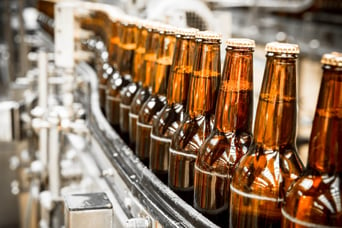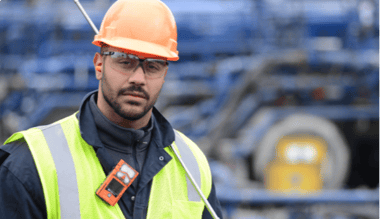Most of us have been scribbling on paper longer than we can remember. And throughout every day, we use paper products of all types. Cereal boxes, paper towels, toilet paper, magazines, fast food wrappers, paper bags, printer paper, wallpaper—the list of paper products we encounter in a day is endless! However, not many of us ever stop to think about the process that turns trees into those paper products we count on. And we certainly don’t stop to think about the dangers that are part of the process for making those products.
The reality is that the same pulp and paper industry that creates harmless household products have some serious hazards in the production process. Some of those gas hazards include:
- Hydrogen sulfide (H2S)
- Carbon monoxide (CO)
- Chlorine (Cl2)
- Chlorine dioxide (ClO2)
- Sulfur dioxide (SO2)
The paper-making process starts when the wood is stripped and ground into chips. Those wood chips are then broken down with steam, pressure, and chemicals in digester units. As the wood is broken down, the pulp is separated out—this is where you could be exposed to hydrogen sulfide gas.
Once the pulp has been separated out, it may go through several bleaching processes where chlorine and chlorine dioxide transform the original brown slurry into the bright white shade that we often think of when we envision paper. To remove excess chlorine from the bleaching process, sulfur dioxide is used to wash the pulp and help maintain the color in the paper after it is bleached. Hydrogen sulfide, sulfur dioxide, chlorine, and chlorine dioxide can all be extremely dangerous, even in relatively low concentrations. Like many other industrial processes, paper making also requires boilers that power the operation—and any time there is combustion, you could be exposed to carbon monoxide gas.
The Best Gas Monitoring Programs for Pulp and Paper Mills
So how we can make paper manufacturing safer? Using personal multi-gas monitors, area monitors, and live monitoring technology is a great place to start.
Having a portable multi-gas monitor configured with sensors for the gas hazards you could encounter ensures that you have awareness of those gas hazards wherever you go in the facility. A device that can monitor up to six gases, like the MX6 iBrid®, can be configured to monitor oxygen, combustible gases, carbon monoxide, hydrogen sulfide, chlorine, and chlorine dioxide. By monitoring for these common gases in one device, you gain visibility into the full spectrum of hazards in a pulp and paper facility, drastically reducing the likelihood that you’ll be overcome by dangerous levels of these gases. If you frequently pass through different areas of the mill, you can easily transition the monitor from personal monitoring to remote sampling with a pump. You no longer need to stop and pick up additional equipment as you enter different departments in the mill.
While the MX6 iBrid addresses safety by showing you six gas readings at one time, the Ventis® Pro5 improves your safety by monitoring gas levels and connecting you to others. The Ventis Pro5 can monitor up to five gases, including oxygen, combustible gases, carbon monoxide, hydrogen sulfide, and chlorine sensors in a pumped or personal gas monitor. The multi-gas monitor can relay your gas readings, man down alarms, and even panic alarms to other devices wirelessly within your area so your peers always know when you need help.
Alarms from Ventis Pro5 monitors can even be shared with Radius® BZ1 Area Monitors (and vice versa) to provide a well-rounded notification system in the mill. Radius BZ1 Area Monitors can be positioned as fence line monitors or placed throughout the process areas to monitor for gases, especially during turnaround periods when significant maintenance is being performed. When combined with SAFER One Dynamic Plume Modeling software, you can quickly and easily locate leaks and releases and model their future path of travel.
Additionally, the Ventis Pro5 and Radius BZ1 can both be paired with live monitoring software (via a wi-fi battery pack or RGX™ Gateway) to send your real-time gas readings, alarm information, and location to supervisors or response personnel throughout the mill. These contacts can configure instant alerts to be notified every time someone in the mill needs emergency assistance, drastically improving response time when seconds make the difference between a tragedy and business as usual.
Despite several gas hazards inherent to the pulp and paper industry, today’s paper mills have options to help protect you and other workers. Gas detection hardware and software can not only detect hazards, but also relay that information quickly so the proper people can take action. We have the technology to provide a safer working environment for our pulp and paper workers—it’s time to use it.



